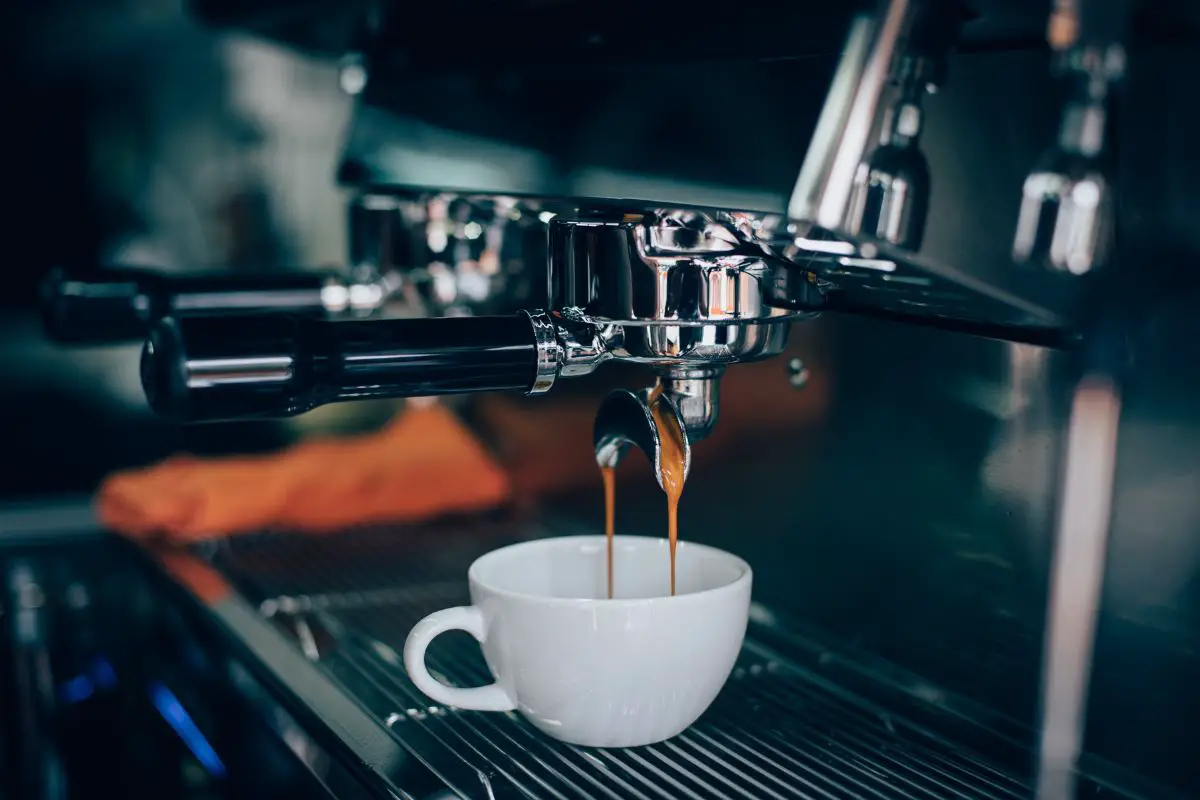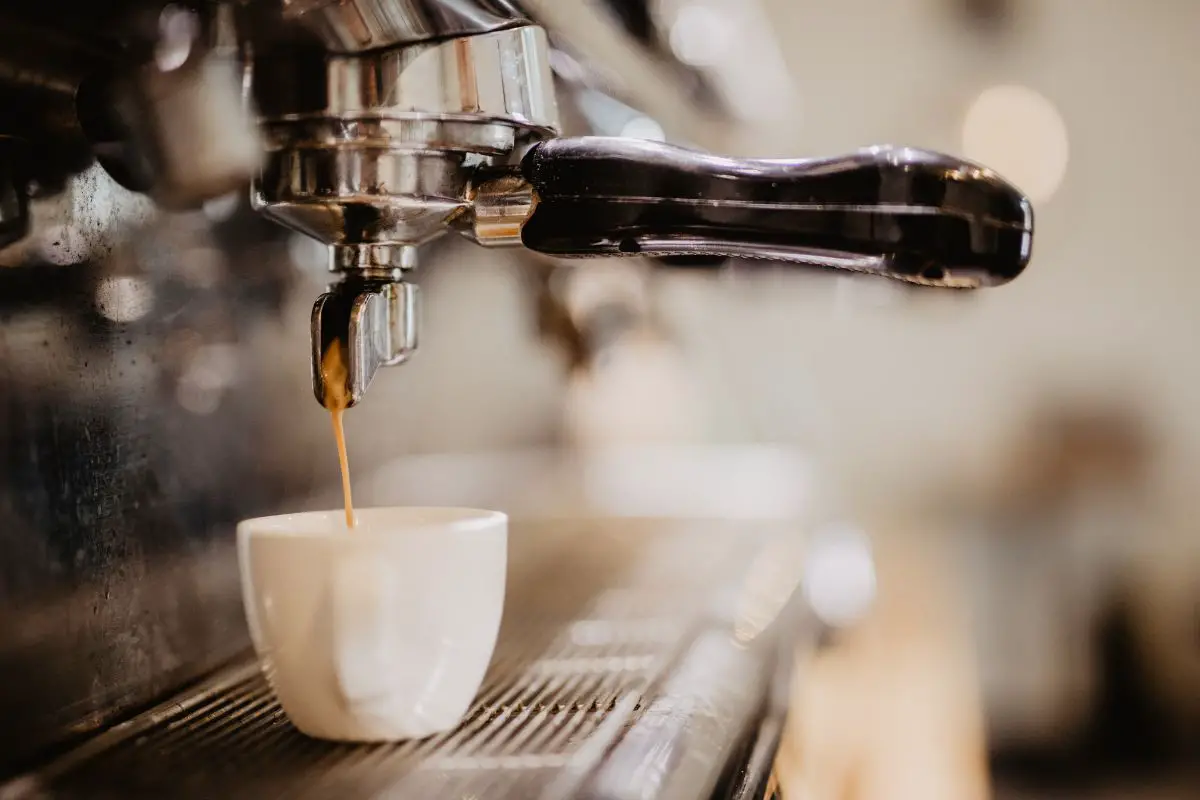Imagine a cup of espresso that is as clear as water, lacking the rich and intense flavor that characterizes a well-brewed shot. This phenomenon, commonly referred to as watery espresso, can be a disappointing and frustrating experience for coffee enthusiasts. Understanding the factors that contribute to this undesirable outcome is crucial in order to achieve the perfect espresso every time.

In this article, we will explore the various reasons behind why your espresso may be watery and provide practical solutions to rectify this issue. From the importance of using freshly ground coffee beans to finding the right coffee-to-water ratio, we will delve into the intricate details of brewing the perfect shot.
Additionally, we will discuss the significance of proper tamping techniques, adjusting the grind size, checking the water temperature, and cleaning and maintaining your espresso machine. By following these guidelines, you will be well-equipped to create a robust and flavorful espresso that is far from watery.
Key Takeaways
- Using freshly ground coffee beans is crucial for a rich and flavorful espresso.
- Proper tamping techniques ensure consistent and even extraction.
- Water temperature significantly affects espresso flavor.
- Cleaning and maintaining the espresso machine is necessary for consistent quality.
The Importance of Freshly Ground Coffee Beans
The freshness of coffee beans plays a crucial role in achieving a rich and flavorful espresso, as the grinding process exposes the beans to oxygen, causing them to lose their flavor and potentially resulting in a watery brew. Coffee beans are at their peak flavor within two weeks of the roast date, and it is recommended to use them within this time frame for the best results.
When coffee beans are exposed to oxygen, they undergo oxidation, which leads to the degradation of flavor compounds. This is why it is important to grind the beans immediately before brewing, as the increased surface area exposes more of the coffee to oxygen, accelerating the flavor loss.
To maintain the freshness of coffee beans, it is advisable to store them in an airtight container away from light, heat, and moisture. Additionally, purchasing whole bean coffee and grinding it at home ensures maximum freshness and flavor retention. By following these practices, the risk of a watery espresso due to stale coffee beans can be significantly reduced.
Transitioning to the next section, achieving the right coffee-to-water ratio is another essential factor in brewing a flavorful espresso.
The Right Coffee-to-Water Ratio
To achieve a balanced and robust extraction, it is crucial to ensure the correct coffee-to-water ratio.
The coffee-to-water ratio refers to the amount of coffee grounds used in relation to the amount of water used for brewing espresso. This ratio plays a significant role in determining the strength and flavor of the final espresso shot.
Using too little coffee in proportion to the water will result in a weak and watery espresso, lacking in flavor and body. On the other hand, using too much coffee can lead to an overpowering and bitter taste. Therefore, it is essential to find the right balance between the two.
The generally recommended coffee-to-water ratio for brewing espresso is 1:2, meaning one part coffee to two parts water. This ratio allows for a well-extracted espresso with a balanced flavor profile. However, it is important to note that different coffee beans and personal preferences may require slight adjustments to this ratio.
Achieving the correct coffee-to-water ratio is a crucial step in producing a high-quality espresso. Once this ratio is mastered, one can move on to the next step, which involves proper tamping techniques to further enhance the extraction process and achieve a consistently delicious espresso shot.
Proper Tamping Techniques
Achieving a balanced and robust extraction in espresso brewing necessitates mastering proper tamping techniques, which act as the firm foundation upon which the intricate and delicate dance of flavors can gracefully unfold.
To ensure a consistent and even espresso extraction, baristas must pay close attention to their tamping technique. Here are three key elements to consider:
- Pressure: Applying the right amount of pressure while tamping is crucial. If the pressure is too light, the water will flow through the grounds too quickly, resulting in a watery espresso. Conversely, excessive pressure can lead to over-extraction and a bitter taste.
- Levelness: Tamping should be done evenly across the entire coffee bed to promote an even extraction. Uneven tamping can lead to channeling, where water finds paths of least resistance and bypasses some of the coffee grounds, resulting in an imbalanced flavor profile.
- Technique: The tamping motion should be smooth and consistent. Avoid any twisting or uneven pressure that may disrupt the coffee bed. Additionally, using a tamper with a flat bottom surface helps distribute pressure evenly.
Mastering these proper tamping techniques is essential for achieving a well-extracted espresso with a balanced flavor profile.
Once the coffee is properly tamped, the next step is adjusting the grind size to further optimize the extraction process.
Adjusting the Grind Size
Optimal extraction in espresso brewing involves adjusting the grind size to finely tune the flavors, much like a skilled musician adjusting the tension on their instrument strings to create the perfect melody. The grind size refers to the particle size of the coffee grounds used in the brewing process. It plays a crucial role in determining the extraction rate and the resulting strength of the espresso shot.
To achieve the desired flavor profile and prevent a watery espresso, it is important to find the right balance between a fine and coarse grind. A finer grind size increases the surface area of the coffee particles, allowing for a quicker and more efficient extraction. On the other hand, a coarser grind size slows down the extraction process, resulting in a weaker and under-extracted shot.
To help visualize the relationship between grind size and extraction, the following table provides a general guide:
| Grind Size | Extraction Rate | Resulting Espresso |
|---|---|---|
| Fine | Fast | Strong |
| Medium | Moderate | Balanced |
| Coarse | Slow | Weak |
By adjusting the grind size, you can control the extraction rate and achieve a well-balanced and flavorful espresso. However, it is important to note that other variables such as water temperature and pressure also impact the extraction process. Therefore, it is necessary to check the water temperature to ensure optimal brewing conditions.
Checking the Water Temperature
Checking the water temperature is an essential step in the espresso brewing process, as it significantly affects the extraction process and ultimately the flavor of the coffee.
For example, if the water temperature is too low, the espresso shot may taste under-extracted and lack complexity, similar to a piece of music that lacks depth and emotion when played on a cold instrument. On the other hand, if the water temperature is too high, the espresso shot may taste over-extracted and have a bitter, burnt flavor.
To achieve the optimal water temperature for brewing espresso, it is recommended to aim for a range between 195°F and 205°F (90°C to 96°C). This range allows for proper extraction of the coffee’s flavors without scorching or under-extracting them.
To ensure the water temperature is within this range, it is essential to use a reliable thermometer. Place the thermometer in the water source that feeds into the espresso machine to accurately measure the temperature. If the water temperature is outside the optimal range, adjustments can be made to the espresso machine’s settings or heating system to achieve the desired temperature.
Checking the water temperature is crucial for achieving a well-extracted and flavorful espresso shot. By maintaining the appropriate water temperature, you can enhance the overall flavor profile of your coffee.
In the next section, we will discuss the importance of cleaning and maintaining your espresso machine to ensure consistent quality.
Cleaning and Maintaining Your Espresso Machine

To ensure a consistently perfect espresso, it is crucial to not only monitor the water temperature but also properly clean and maintain your espresso machine. Cleaning and maintaining your machine is essential for preventing any build-up or residue that could affect the quality and taste of your espresso.
Regular cleaning removes any oils, coffee grounds, and mineral deposits that can accumulate over time. This build-up can clog the machine’s components, leading to a decrease in water pressure and, consequently, a watery espresso. To avoid this, it is recommended to follow the manufacturer’s instructions for cleaning and descaling your machine regularly.
In addition to regular cleaning, proper maintenance is essential. This includes checking and replacing worn-out gaskets, seals, and filters. Neglecting these maintenance tasks can result in leaks, inconsistent water flow, and ultimately, weak and watery espresso.
To summarize, cleaning and maintaining your espresso machine is vital in preventing a watery espresso. By following the manufacturer’s instructions for cleaning and performing regular maintenance, you can ensure the longevity of your machine and consistently enjoy a rich and flavorful espresso.
- Cleaning and descaling regularly:
- Removes oils, coffee grounds, and mineral deposits
- Prevents clogging and decreased water pressure
- Proper maintenance:
- Checking and replacing worn-out gaskets, seals, and filters
- Prevents leaks and inconsistent water flow.
Frequently Asked Questions
How can I prevent my espresso from tasting bitter?
To prevent espresso from tasting bitter, ensure the correct water temperature (between 195-205°F) and extraction time (around 25-30 seconds) are maintained. Additionally, use freshly roasted beans and clean equipment regularly to avoid any residual flavors.
Is it necessary to preheat my espresso machine before brewing?
Preheating an espresso machine before brewing is necessary to ensure optimal extraction. It helps to stabilize the temperature of the machine, allowing for consistent and even extraction, resulting in a higher quality espresso shot.
Can I use pre-ground coffee instead of freshly ground beans?
Using pre-ground coffee instead of freshly ground beans can result in a watery espresso. Freshly ground beans provide a consistent grind size, ensuring proper extraction and a fuller flavor profile.
How long should the extraction time be for a perfect espresso shot?
The extraction time for a perfect espresso shot should be approximately 25-30 seconds. This allows for optimal extraction of flavors without over-extraction, resulting in a balanced and flavorful espresso shot.
What is the ideal pressure for extracting espresso?
The ideal pressure for extracting espresso is typically between 9 and 10 bars. This range allows for optimal extraction of flavors and oils from the coffee grounds, resulting in a balanced and flavorful espresso shot.
Conclusion
In conclusion, the key to achieving a rich and bold espresso lies in mastering the art of coffee-making.
Just as a conductor skillfully orchestrates a symphony, a barista must carefully balance the elements of coffee-to-water ratio, grind size, tamping techniques, and water temperature to create the perfect brew.
Neglecting any of these factors can result in a watery and lackluster espresso.
By understanding and implementing these principles, you can transform your espresso experience into a harmonious and satisfying symphony of flavors.
Related articles: